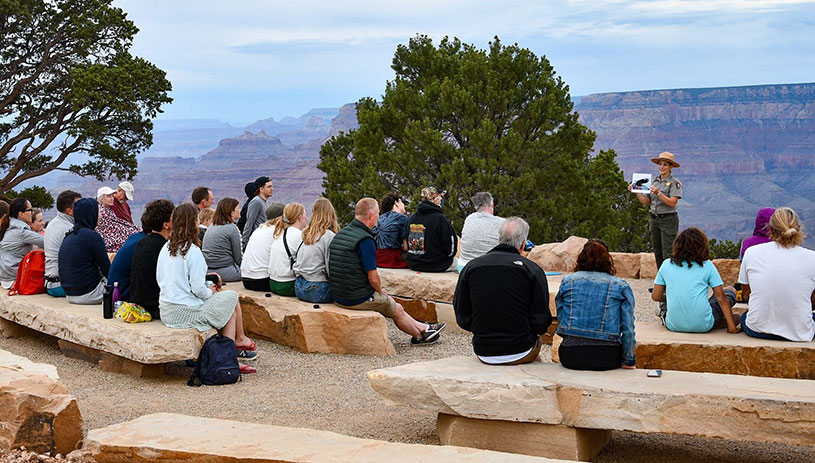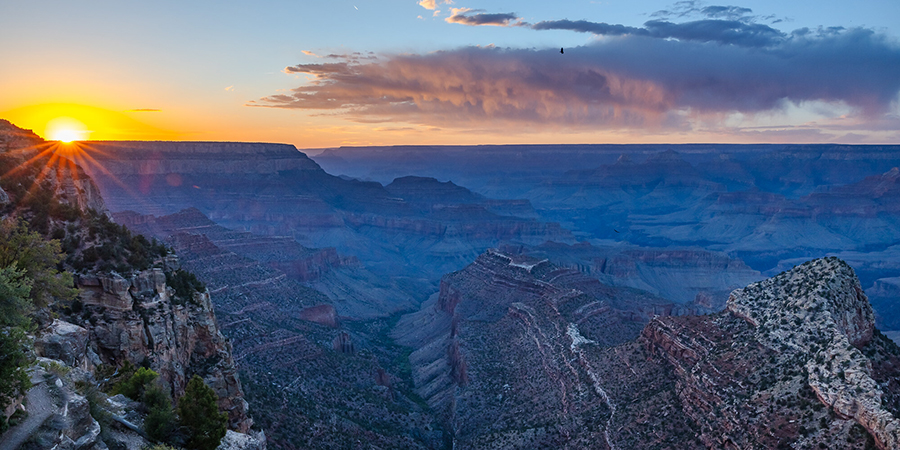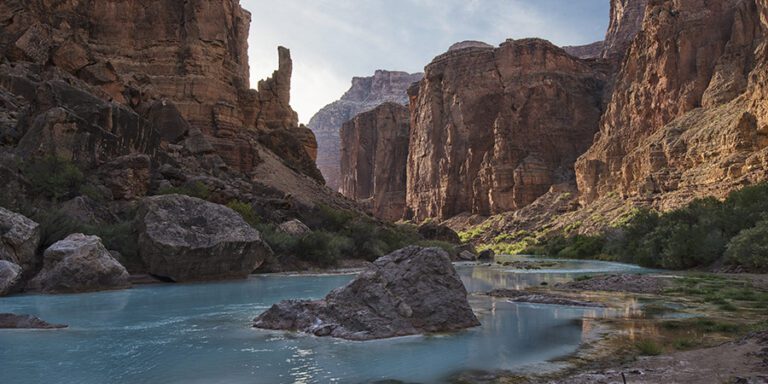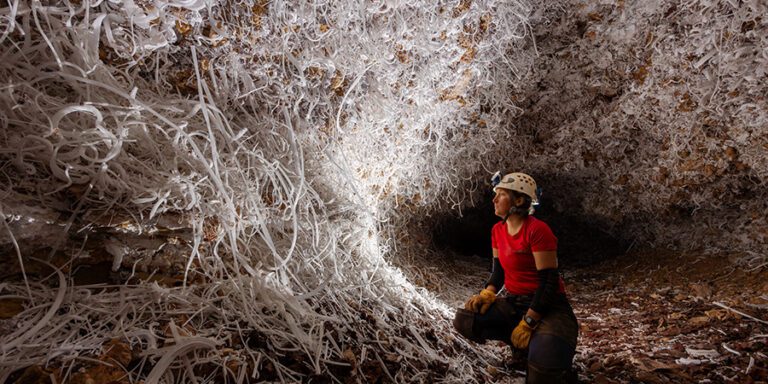
Grand Canyon National Park is an economic engine in northern Arizona. A new National Park Service report shows how much it adds to local communities.
*This post has been updated to reflect the most current National Park Service visitor spending data. See National Park Service spending reports by year
National parks do more than protect and preserve our most cherished landscapes — they fuel local economies too. Here in the Grand Canyon state, tourists spend millions of dollars each year to stand on the canyon rims, sleep under starry skies, and raft the Colorado River.
A new National Park Service report shows just how much Grand Canyon National Park adds to local economies in northern Arizona.
According to the report, 4.9 million people visited Grand Canyon National Park in 2024, shelling out $905 million in nearby communities. All that spending supported 8,780 jobs, $393 million in labor income, and $1.1 billion in economic output.
Grand Canyon National Park is a big piece of Arizona’s economic pie. But what do these numbers mean? How much money do visitors spend at the canyon? What kinds of tourism jobs are available? What economic benefits trickle from the park into gateway communities?
Let’s break down the numbers of Grand Canyon National Park’s economy.
What does a trip to the Grand Canyon cost?

There’s a range of ways to enjoy Grand Canyon National Park that fit different budgets, from a day trip to the South Rim, a rim-to-rim hiking adventure, a weekend escape to the North Rim, a Colorado River rafting trip, and more. Here’s how the money you spend contributes to local economies:
In addition to paying the $35 park entrance fee, you’ll probably top off your gas tank at some point during your visit. You might grab some food or drink from one of the many restaurants. The kids will definitely ask for ice cream.
Park campgrounds cost around $20 per night, while hotels and lodging on the South Rim typically range from $100 to more than $400 per night. Helicopter tours run about $220-$500 per person, sunset jeep tours $120 per person, and mule rides $155+ per person.
Multiply that by millions of visitors each year, and the Grand Canyon becomes an economic engine. According to the park service report, here’s where visitors spent their $905 million in 2024:
- Lodging: 34.51%
- Recreation: 18.35%
- Restaurants: 16.39%
- Transportation: 11.38%
- Retail: 6.42%
- Gas: 6.28%
- Groceries: 5.25%
- Camping: 1.41%
Who works at Grand Canyon National Park?
National Park Service employees
The National Park Service employs a range of staff: interpretive rangers, law enforcement officers, hydrologists, geologists, biologists, helicopter pilots, custodians, maintenance workers, health care workers, public information officers, cultural resource specialists, and more. Many jobs are seasonal. Permanent full-time positions are fewer in number and harder to get, as preference is given to current federal employees.
Although the Grand Canyon is the traditional homeland of at least 11 Native tribes and nations who maintain cultural ties to area, only about 6 percent of park employees are Native. Hiring reform is a necessary and crucial step in centering Indigenous culture, history, and perspectives at the park, while exposing millions of annual visitors to historic and modern-day connections of the Grand Canyon’s original stewards.
READ: It’s Time to Reform Hiring at Grand Canyon National Park
Concessionaires
You don’t have to wear green trousers, a standard-issue gray shirt, and flat-brimmed hat to work at Grand Canyon National Park. There’s a plethora of job opportunities through concessionaires — private companies that work with the park service to provide transportation, retail, tours, lodging, restaurants, and other services.
Grand Canyon National Park has over 20 concessionaires, the majority of which are river rafting outfitters. The two national concessionaires that provide almost all services on the South Rim are Xanterra and Delaware North. They employ the people who cook your food, wash your dishes, clean your room, book your shuttles, and ring up your souvenirs. Electricians, kennel workers, mechanics, bus drivers, accountants, and more all help millions of people experience Grand Canyon National Park.
What towns benefit from Grand Canyon National Park?
You can’t visit Grand Canyon National Park without passing through a town on your way. The local economies in Flagstaff, Williams, and Tusayan are built on Grand Canyon tourism.
But not all gateway towns benefit equally. Very few of the park’s tourism dollars reach the 11 associated tribes of the Grand Canyon that were pushed off their ancestral lands to make way for Grand Canyon National Park. Towns like Cameron, Arizona on the Navajo Nation, which is the gateway to eastern Grand Canyon, and other Native communities in the region are trying to change that.
READ: Creating More Space in the Grand Canyon Economy
Rectifying historical inequities while reckoning with cultural differences in economic paradigms is no easy task. Initiatives like the Emergence Intertribal Economic Summit, Native business incubators like Change Labs, and individual Native entrepreneurs are laying the foundation of a more equitable Grand Canyon economy that centers, advances, and respects Native cultural values.
Find out more about the economic conversations happening in and around the Grand Canyon region
Curious about how the 2024 numbers stack up against previous years? See past National Park Service visitor spending reports
How can you help keep the canyon grand?
Sign the petition and add your voice to help protect the Grand Canyon from destructive developments and uranium mining.




